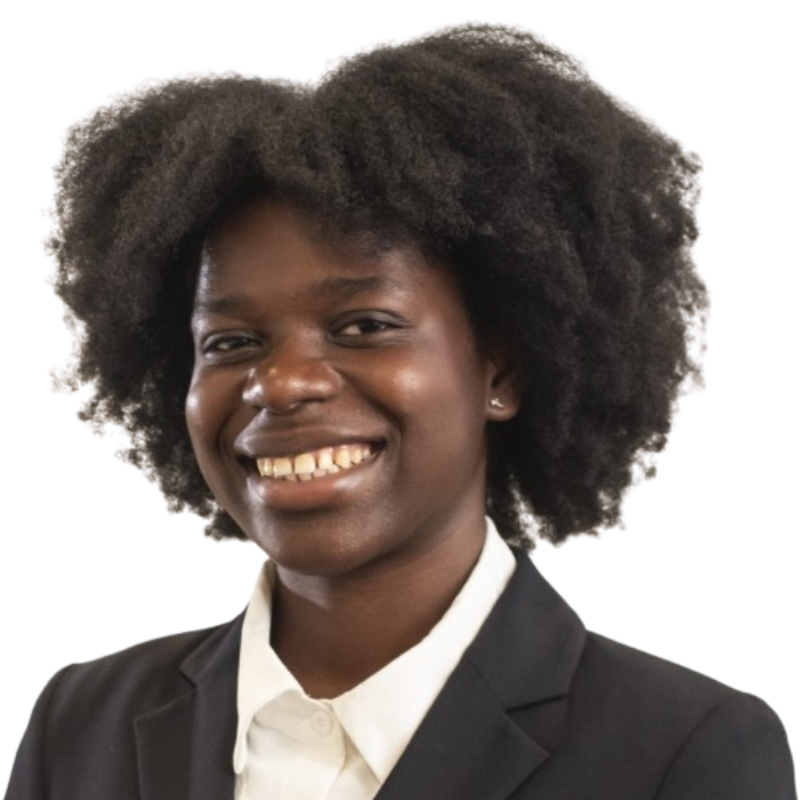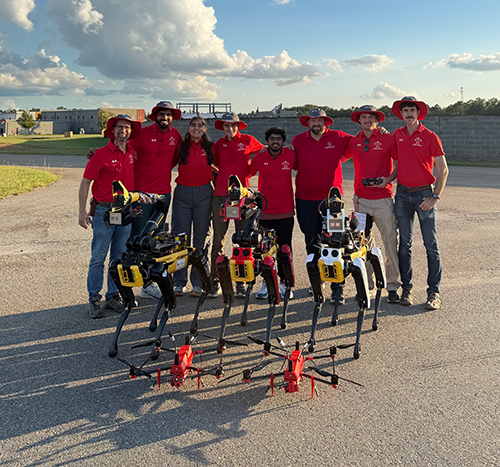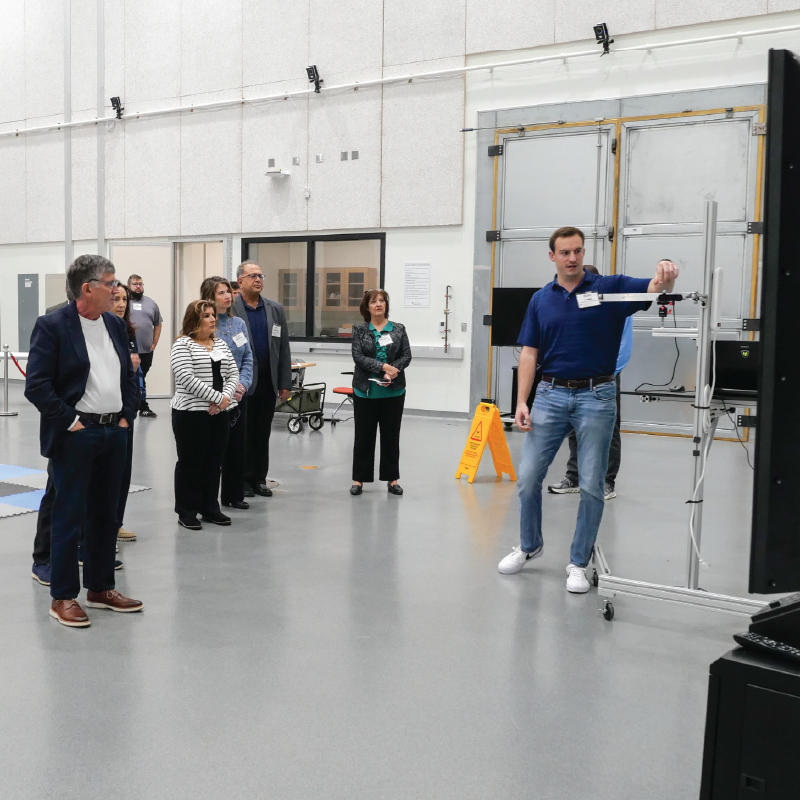News Story
Department Names 2022 Distinguished Dissertation Fellowship Awardees

2022 Distinguished Dissertation Fellowship Awardees: top row - Uday Saha and Nadee Seneviratne, bottom row - Justin Stine and Jiahao Zhan
The Department of Computer and Electrical Engineering (ECE) recently named their 2022 Distinguished Dissertation Fellowship awardees. The Distinguished Dissertation Fellowship is a departmental award recognizing outstanding students in the final stages of their dissertation work and seeks to provide both a financial award and recognition of the student's research excellence.
The 2022 Distinguished Dissertation Fellowship Awardees are:
Uday Saha - Advisor: Professor Edo Waks
Dissertation: “Quantum Modem and Router for Quantum Internet"
About their research: Like the internet, a quantum internet can be a game-changer by connecting quantum computers over long distances. This connectivity can revolutionize numerous industries like computing, banking, medicine and data analytics that take advantage of quantum computing and simulations. Although we are seeing the emergence of excellent quantum computers, we still don't have the core technologies to connect them. In his research, he developed a quantum modem and quantum router for trapped ion quantum computers, the most promising quantum computing platform.
Saha accomplished a quantum modem that provides an interface between a quantum computer and a fiber-optic network by generating telecom photons from the computer. On the other side, he implemented a quantum router using photonic integrated circuits and demonstrated the first experiment using a quantum modem and router together. Currently, he is working to develop a multiplexing scheme by which we can send quantum information from multiple quantum computers using a single fiber-optic cable. So far, he has published in ten peer-reviewed high-impact journals and presented his work at nine highly prestigious conferences.
Nadee Seneviratne – Advisor: Professor Carol Epsy-Wilson
Dissertation: “Generalizable Depression Detection and Severity Prediction Using Articulatory Representations of Speech"
About their research: Major Depressive Disorder (MDD) is a mental health disorder that has taken a massive toll on society both socially and financially. Automated solutions that can reliably detect MDD can play a pivotal role in assisting healthcare professionals in providing timely treatments. My work is based on changes in speech production caused by MDD due to psychomotor slowing. I worked on developing deep learning based generalizable models to accurately detect and predict the severity of MDD using articulatory coordination features derived from direct articulatory parameters called Vocal Tract Variables. These models improved the classification performance using a multi-stage segment-to-session level classification approach which also served as a solution to limited amount of data in speech depression databases. The results were further improved by incorporating both speech and language. In the future, these improved models can be deployed in a digital health technology that can be used by clinicians to monitor the mental health of patients between visits which can help to eventually minimize serious consequences such as suicide.
Justin Stine – Advisor: Professor Reza Ghodssi
Dissertation, “Mesoscale Embedded Sensor-Integrated Systems for Localized Biomedical Monitoring"
About their research: Capsule-based platforms across biomedical and biopharmaceutical domains have been adapted for continuous monitoring in aqueous and difficult to access environments, providing real-time, localized measurements of biomarkers. Yet, there is no standardized method for introducing new biomarkers or scaling devices.
Stine’s work utilizes advancements in mesoscale manufacturing to develop miniaturized, wireless sensor-integrated prototypes for two case-study applications: (1) an ingestible capsule for measuring hydrogen sulfide and tissue impedance in the GI tract and (2) a bioprocessing capsule (bPod) for monitoring dissolved oxygen in cell-culture bioreactors. These devices highlight a modular design, integrating microfabricated electrochemical gas sensors with front-end electronics and a biocompatible molded package suitable for each application, addressing the system integration challenges inherent to miniaturization. The detection of gaseous biomarkers of interest was demonstrated in vitro using electrochemical techniques such as amperometry.
Overall, this approach has the potential for implementing biofeedback-driven control and multiple sensing modalities at meso-scale for targeted monitoring of healthcare biologics.
Jiahao Zhan – Advisors: Professor Mario Dagenais and Professor Sylvain Veilleux (Astronomy)
Dissertation: “Silicon Nitride Integrated Photonic Devices and Their Applications in Astronomy and Quantum Physics”
About their research: The photonics technology has revolutionized the telecommunication industry in the past 40 years with the deployment of the undersea fiber-optic network. In recent years, with the maturity of silicon photonics technology, the integrated photonic platform is enabling more and more cutting-edge technologies, such as optical transceivers for data center connectivity, automotive LiDARs for self-driving vehicles, the next-generation astronomical instrumentation and near-term photonic quantum computers, to name a few.
In this dissertation, Zhan provides an introduction of integrated photonics, and a brief overview of some of its novel applications and current trends. Next, he graphically shows their methods for device fabrication and characterization, and then demonstrate a few integrated photonic devices implemented on SiN material platforms, including Bragg grating, multimode interferometer, polarization beam splitter, and polarization rotator, with an in-depth discussion of their potential applications, principles of operation, simulation and experimental results.
Zhan will then embark on a new chapter on arrayed waveguide gratings (AWGs), with special emphasis on its application in integrated astronomical spectrometers. To obtain a continuous two-dimensional spectrum, cleaving at the output focal plane of the AWG is required. Zhan discusses and demonstrates a three-stigmatic-point AWG, which provides an elegant solution to the non-flat focal plane issue occurring in traditional Rowland AWGs. This work conducted in this chapter is a critical step towards the development of an efficient and miniaturized astronomical spectrograph for the upcoming extremely large telescopes.
Published May 12, 2022









